When ripping along bumpy singletrack or diving into steep mountain bike descents, a solid grip on your handlebar and easy access to your brakes and shifter can enhance your ride by increasing comfort and control. But picking the right handlebar for your style of riding and setting up your cockpit for optimal performance is not as simple as it sounds. Shimano’s Mountain Bike Handlebar Setup Guide will help you pick the right bar shape and width, set up the handlebar correctly on your bike, and it’ll help you adjust your brake levers, shifter, and dropper lever so you can ride faster and feel more confident out on the trails.

Part I: Handlebar Shape and Width
Handlebar Shape: Upsweep, Backsweep, and Rise
When it comes to picking the best bar shape and width for you, it’s helpful to have a basic understanding of mountain bike handlebar geometry. Bars are shaped to make your hand position more comfortable and to help increase control of the bike. The shape of a bar can be described in three ways: backsweep, upsweep, and rise.
Backsweep describes how much the handlebar bends back along the horizontal plane toward you. Upsweep is the angle at which the bar turns upward from the flatter middle section of the handlebar. Mountain bike bars typically have 7-9 degrees of backsweep with 4-6 degrees of upsweep. Additionally, a bar’s rise is the actual measurement of how high above the stem the ends of your handlebar sit. Switching to a “taller” bar is essentially the same as adding spacers under your stem.
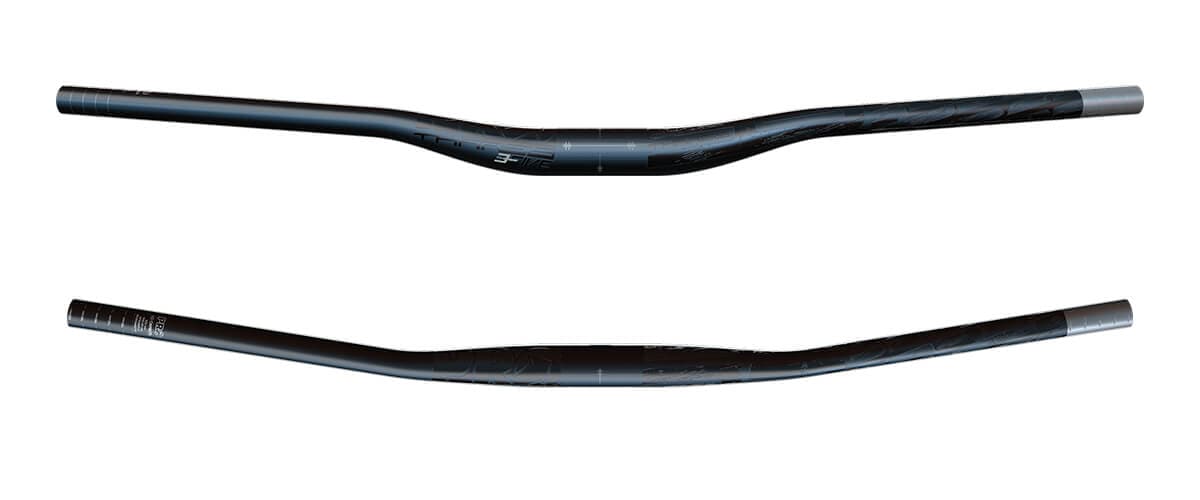
Deciding what angles and measurements work for you first comes down to personal preference and rider position. When riding, if your cockpit feels too low, try switching to a riser bar that sweeps upward and puts your hands higher for a more upright riding position. Feel too high? Try a flatter bar without any rise. Different riders prefer different setups, and it's important to test out different handlebars to find what works best for you. In general, cross country riders and racers often gravitate toward flat bars while trail and gravity riders opt for riser bars. That's because a taller bar keeps your torso more upright, which can make you feel more confident and stable when descending.
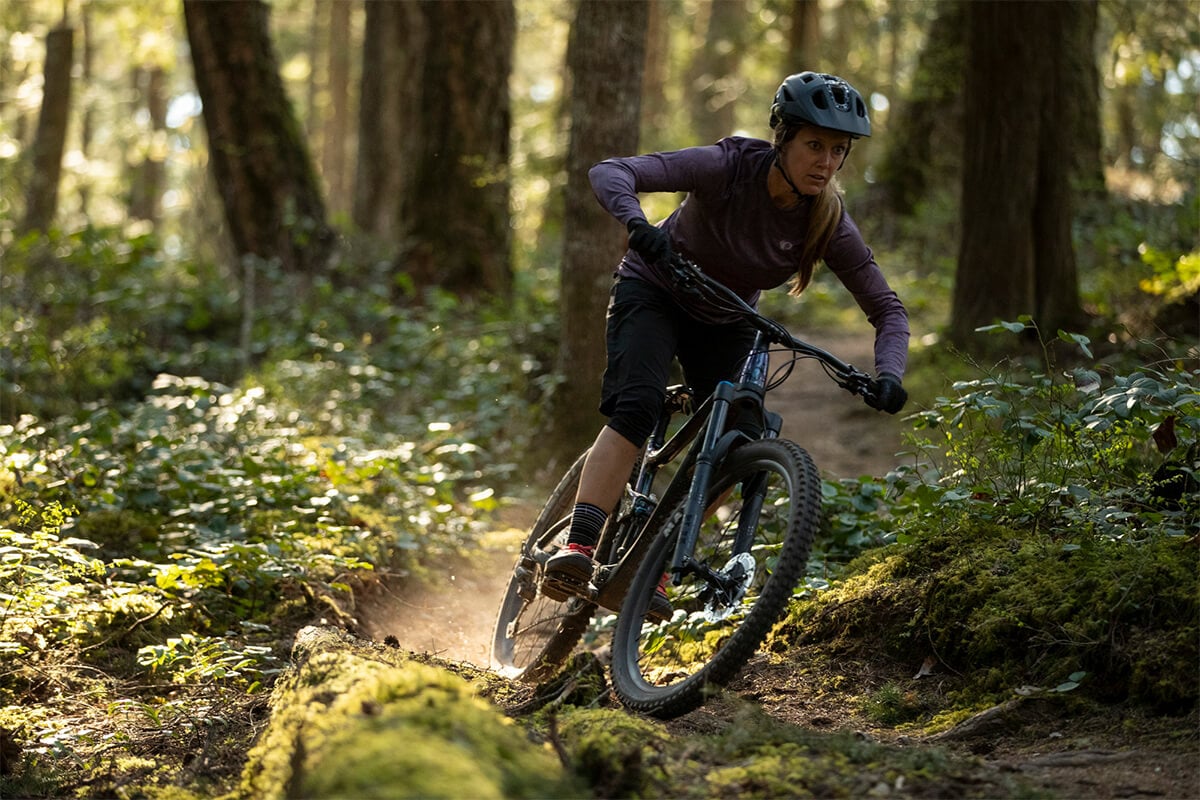
Handlebar Width: Is Wider Better?
The recent trend in mountain biking is that wider bars are better, the idea being that a wider handlebar provides more leverage and control. But again, the right answer often comes down to personal preference as well as your riding style. Another consideration is the type of terrain you typically ride, says Shimano Marketing Specialist Joe Lawwill, who is also an elite level enduro racer.
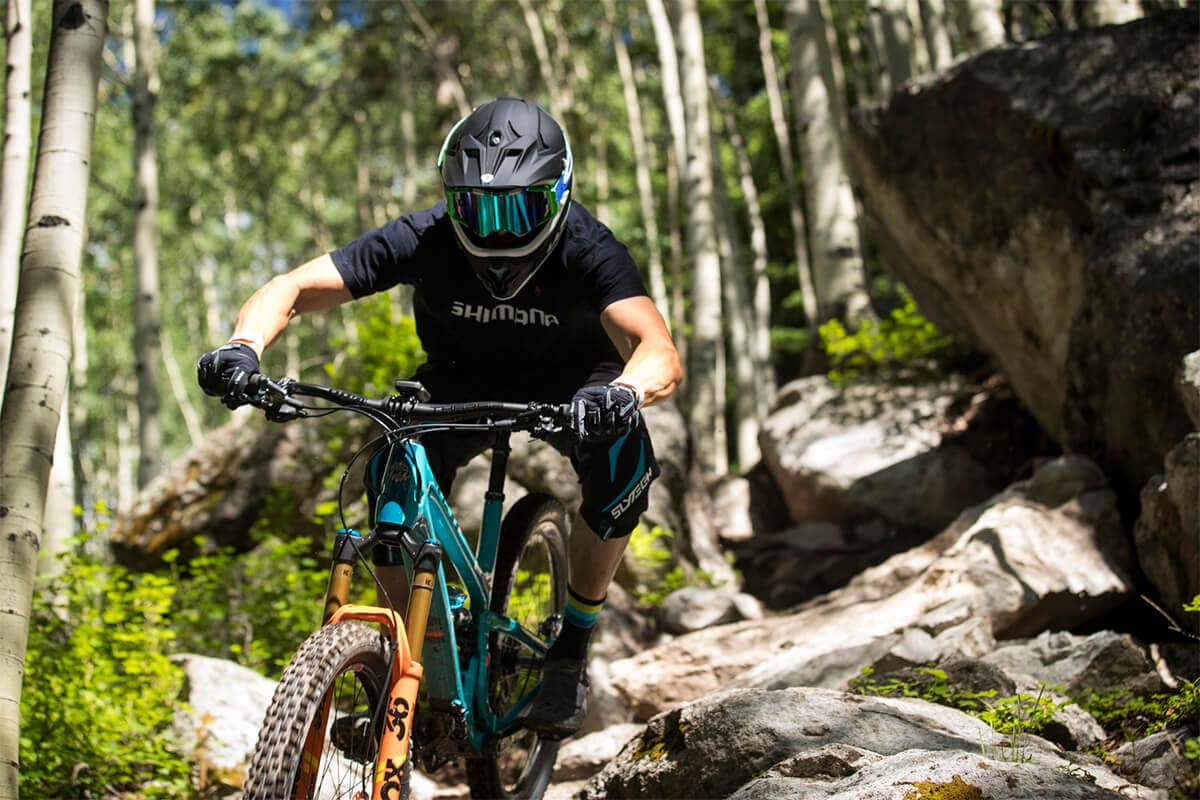
“My rule of thumb, in general, is to choose my bar width based on the type of bike and the area I am riding,” says Lawwill. “Depending on the bike, I go as wide as my riding area permits. If I'm riding narrow singletrack trails lined with trees, I go a tad narrower to save knuckles. But obviously, as you go wider, your input on the bars becomes more powerful and sensitive. So, wide bars on a heavy, fast-moving bike like an enduro bike makes sense. On the other hand, wide bars on a lightweight cross-country bike with a steep head angle would be far too sensitive and not make sense.”
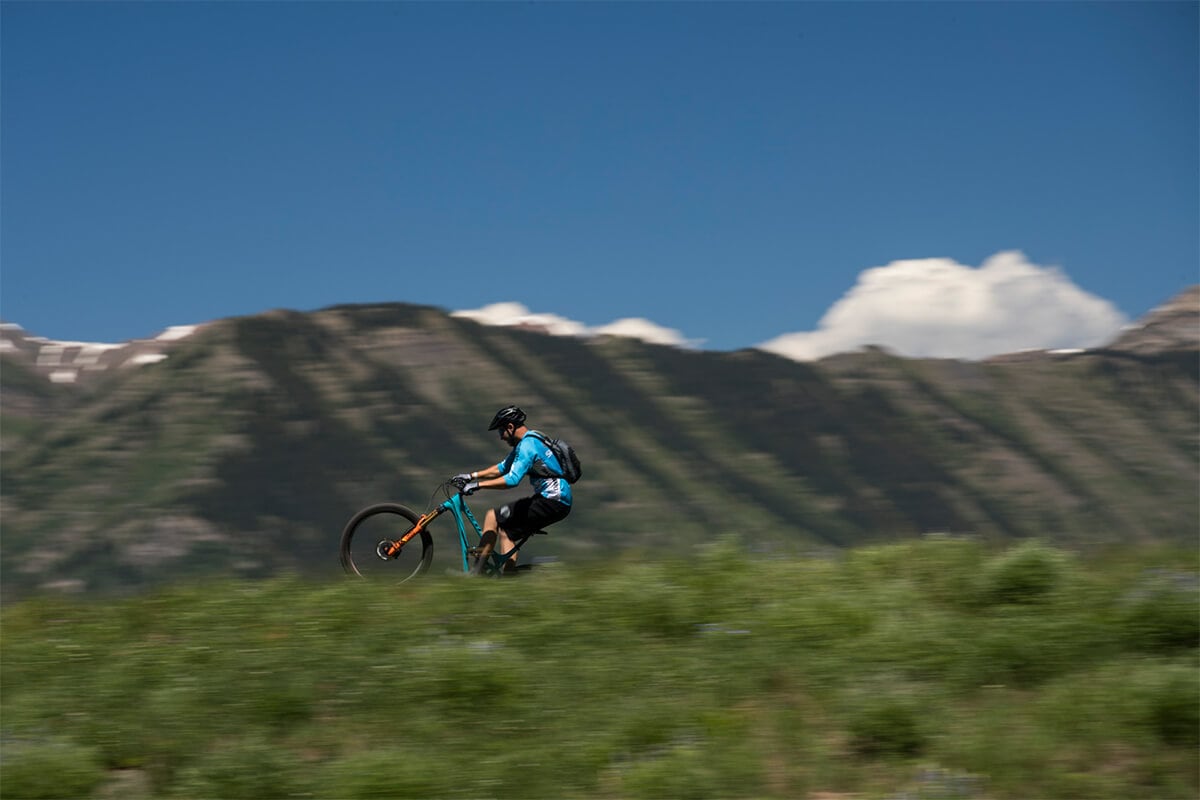
If you're unsure how wide to go, the good news is that when you buy a new handlebar, it's at its widest to start. You can test out the bar at this width, and if you decide that 800 mm or 780 mm is too much, you can easily cut them down. So, don’t be afraid to experiment!
PRO Handlebar Selection
Now that you understand the key aspects of mountain bike handlebar shape and width, it’s time to pick the best option for you and your bike. PRO offers an assortment of mountain bike handlebar options that can be differentiated by construction material (carbon or alloy), primary use (trail or XC), diameter (31.8 mm or 35 mm), and amount of rise (flat, low rise, or high rise). PRO also offers several bars with seamless Shimano Di2 electronic shifting integration.
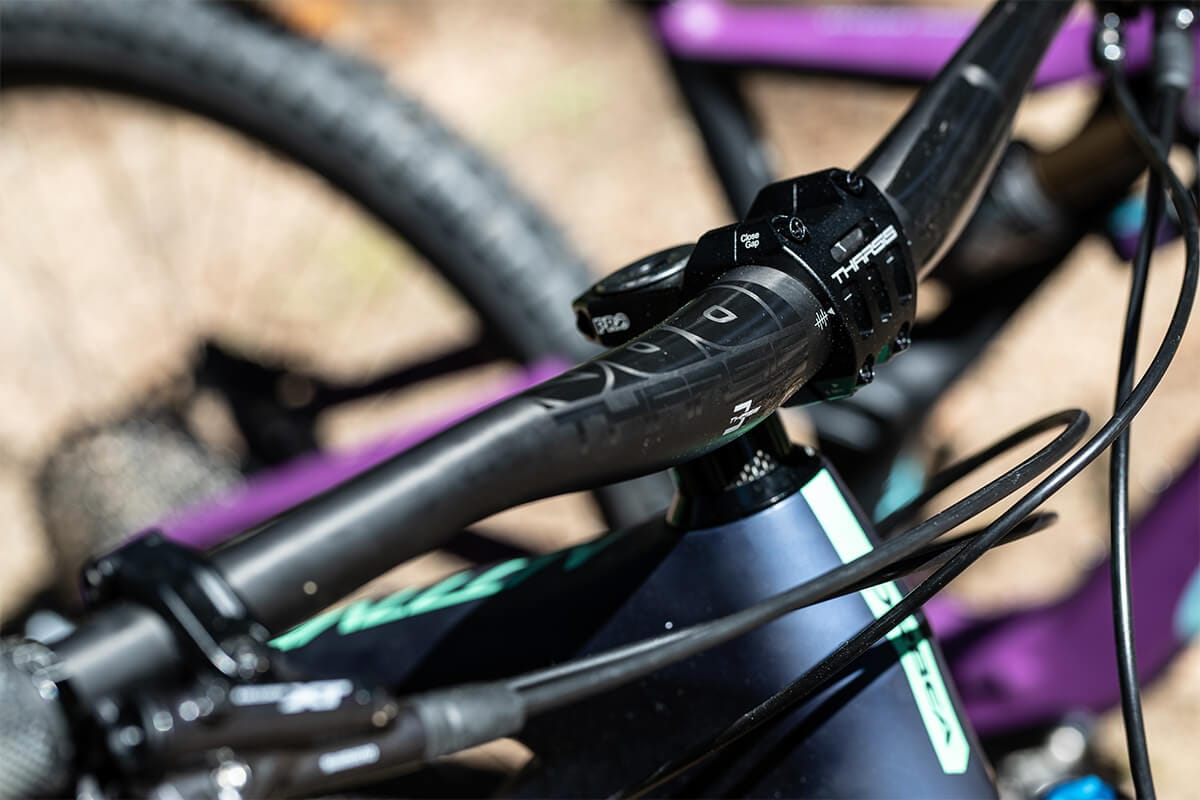
PRO handlebars also come in a variety of width options with the trail and enduro-style bars typically coming in at 800 mm, while the flatter, XC bars ranging from 700 mm to 740 mm. Bar width and construction material also have a significant impact on weight. For example, the PRO Tharsis XC Flat Top bar, which is made from carbon fiber and is 720 mm wide, weighs 160 grams, while the alloy PRO Tharsis 3Five Alloy Riser bar is 800 mm wide and weighs 250 grams.
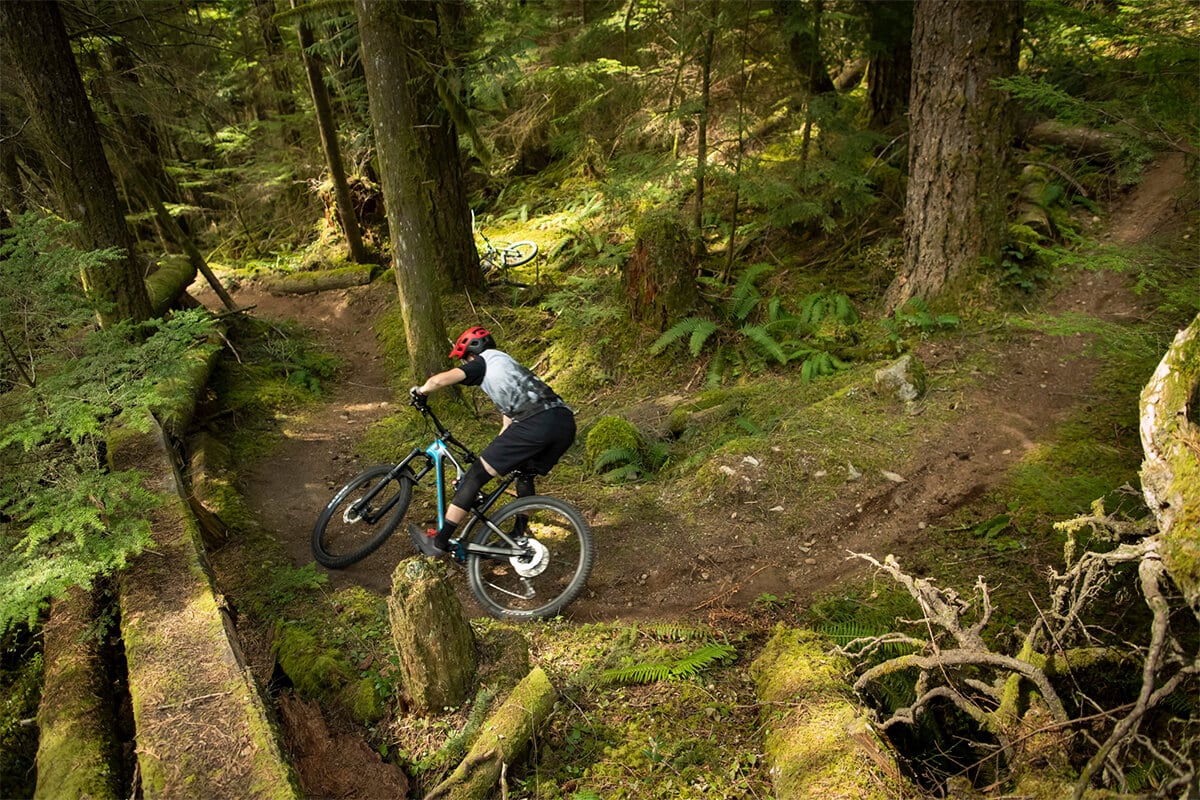
Once you’ve found the right handlebar shape and width for your riding style, the next step is setting up your mountain bike cockpit and adjusting your controls on the bar. Check out Part II of Shimano’s Mountain Bike Handlebar Setup Guide for more information on how to configure your handlebar to increase confidence and control on the bike.
Click here to read more: Part 2


